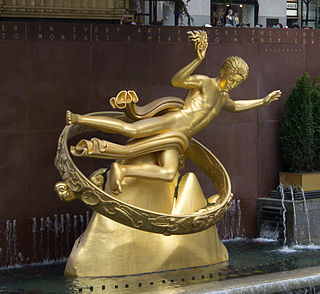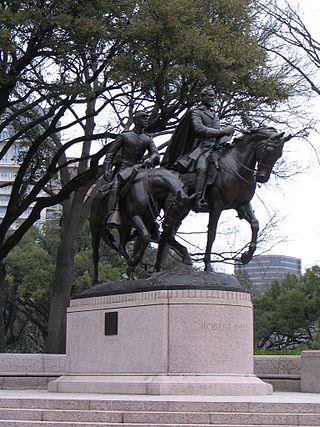
Leonardo di ser Piero da Vinci was an Italian polymath of the High Renaissance who was active as a painter, draughtsman, engineer, scientist, theorist, sculptor, and architect. While his fame initially rested on his achievements as a painter, he has also become known for his notebooks, in which he made drawings and notes on a variety of subjects, including anatomy, astronomy, botany, cartography, painting, and palaeontology. Leonardo is widely regarded to have been a genius who epitomised the Renaissance humanist ideal, and his collective works comprise a contribution to later generations of artists matched only by that of his younger contemporary Michelangelo.

John Bacon was a British sculptor who worked in the late 18th century. Bacon has been reckoned the founder of the British School of sculpture. He won numerous awards, held the esteem of George III, and examples of his works adorn St Paul's Cathedral and Westminster Abbey in London, Christ Church, Oxford, Pembroke College, Oxford, Bath Abbey and Bristol Cathedral.

Bronze is the most popular metal for cast metal sculptures; a cast bronze sculpture is often called simply "a bronze". It can be used for statues, singly or in groups, reliefs, and small statuettes and figurines, as well as bronze elements to be fitted to other objects such as furniture. It is often gilded to give gilt-bronze or ormolu.

The Vitruvian Man is a drawing by the Italian Renaissance artist and scientist Leonardo da Vinci, dated to c. 1490. Inspired by the writings of the ancient Roman architect Vitruvius, the drawing depicts a nude man in two superimposed positions with his arms and legs apart and inscribed in both a circle and square. It was described by the art historian Carmen C. Bambach as "justly ranked among the all-time iconic images of Western civilization". Although not the only known drawing of a man inspired by the writings of Vitruvius, the work is a unique synthesis of artistic and scientific ideals and often considered an archetypal representation of the High Renaissance.

Enzo Plazzotta was an Italian-born British sculptor.

The Draughtsman's Contract is a 1982 British period comedy-drama film written and directed by Peter Greenaway – his first conventional feature film. Originally produced for Channel 4, the film is a form of murder mystery, set in rural Wiltshire, England in 1694. The period setting is reflected in Michael Nyman's score, which borrows widely from Henry Purcell, and in the extensive and elaborate costume designs. The action was shot on location in the house and formal gardens of Groombridge Place. The film received the Grand Prix of the Belgian Film Critics Association.
Events from the year 1981 in art.
Ercole Ferrata was an Italian sculptor of the Roman Baroque.

Leonardo da Vinci was an Italian Renaissance painter and polymath who achieved legendary fame and iconic status within his own lifetime. His renown primarily rests upon his brilliant achievements as a painter, the Mona Lisa and The Last Supper, being two of the most famous artworks ever created, but also upon his diverse skills as a scientist and inventor, engineer, theorist, sculptor, and architect. He became so highly valued during his lifetime that the King of France bore him home like a trophy of war, supported him in his old age and, according to legend, cradled his head as he died.
Events from the year 1921 in art.

Timothy Dingwall Bateson was an English actor.
Geoffrey Michael Chater Robinson was an English film, television and stage actor. He appeared in the crime drama series Callan, Foyle's War and Midsomer Murders.
Arbit Blatas, born Nicolai Arbitblatas, was an artist and sculptor of Lithuanian–Jewish descent.

The Whittington Stone is an 1821 monumental stone and statue of a cat at the foot of Highgate Hill, a street, in Archway. It marks roughly where it is recounted that a forlorn character of Dick Whittington, loosely based on Richard Whittington, returning to his home from the city of London after losing faith as a scullion in a scullery, heard Bow Bells ringing from 4+1⁄2 miles (7.2 km) away, prophesying his good fortune leading to the homage "Turn again Whittington, thrice Lord Mayor of London!" This quotation and a short history of the man cover two faces of the stone. The pub next to it is of the same name.

David Richard Wall CBE was an English ballet dancer of The Royal Ballet, where he was promoted to the rank of principal at the age of 21, the youngest in company history at the time.

Prometheus is a 1934 gilded, cast bronze sculpture by Paul Manship, located above the lower plaza at Rockefeller Center in Manhattan, New York City.

A statue of William Shakespeare, by the sculptor Giovanni Fontana after an original by Peter Scheemakers, has formed the centrepiece of Leicester Square Gardens in London since 1874.

The equestrian statue of the Duke of Wellington is an outdoor sculpture of Arthur Wellesley, 1st Duke of Wellington, a British soldier and statesman, located at the Royal Exchange in London. It overlooks Bank junction in the historic City of London. The sculptor was Francis Leggatt Chantrey. The statue commemorates Wellington's assistance to the City of London in ensuring that a bill was passed to allow the rebuilding of London Bridge.

Robert E. Lee on Traveller is a bronze sculpture by Alexander Phimister Proctor depicting the Confederate general of the same name, his horse Traveller, and a young Confederate States Army officer, formerly installed at Dallas' Turtle Creek Park, in the U.S. state of Texas. The statue was unveiled by President Franklin D. Roosevelt in 1936, removed in 2017, and sold by the city for $1,435,000 to a law firm. It now stands on a Texan golf course.
John Milne (1931–1978) was an English abstract sculptor who worked mainly in bronze and wood but also aluminium and stone. A prominent member of the St Ives group of artists, he was a pupil and worked as an assistant to Barbara Hepworth for two years.















